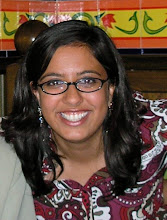I love the Washington Post. Granted, it's the paper I've grown up reading it, but I love it nonetheless.
Since the media frenzy over the presidential election began what seems like eons ago, I told myself I wouldn't get caught up in it until 2008 (you know, the actual year in which the election will be taking place). And since the new year is now barreling down on us, I guess it's time for me to strap on my political thinking cap and dive into this mess. Enough with all the speculation, bring on the caucus results and lets get some answers.
But what does that have to do with my love for the Post, you ask? Well, luckily for me, just when I decide to start paying attention, guess what appears in the paper. Last week the Post ran a series called "The Front Runners," profiling the eight leading presidential candidates - three Democrats and five Republicans. Each day for a week, the paper ran a double truck biographical piece ("How (S)He Got Here") and three shorter pieces: "How (S)He Runs," "How (S)He Talks" and "How (S)He Looks" on the candidate of the day. On the last day, the paper also ran shorter pieces on Biden, Dodd, Richardson, Kucinich, Paul and Tancredo. Though I still can't tell you what each individual's plans are for immigration, social security or the war (though there is this extensive quiz on the Post's site that will tell you just that), I enjoyed reading about the people, not the candidates, who want to run my country.
The series wasn't a recap of each campaign's progress, it was a look at the individuals at the center of the campaign. I can look anywhere to find out where Clinton, Obama or Huckabee stand on a specific issue, but this series told me about Hillary and Barack and Mike, where they've come from and how they've gotten here. Sometimes we get so caught up in the debates, the stump speeches, the photo ops that we forget that at one point, these candidates were regular people. They were kids who goofed off in class, they were teenagers who argued with their parents and as much as all this media coverage bothers us regular people, the whole campaign process takes quite a toll on them.
But back to the series. I especially loved the tag clouds. (Here's Romney's, which I found interesting because "woman" wasn't the largest word for Clinton and "black" wasn't the largest word for Obama, but people still seem to characterize Romney by his religion). The Post created these graphics based on survey results where people defined the candidate in a word. This seems like just the type of thing our journalism professors keep telling us we need think about if we want to be successful in this field.
This whole series embodies what how we should be thinking. Yes, there was a paper component, but online, the series used flash graphics, videos, audio and regular slide shows, discussions, and comment boards - all the weapons in the online journalism arsenal. And while I haven't really looked at many of these online-only components, they are at least making use of the medium. So, from a student whose professors keep telling her the internet is the way to go, thanks WaPo for providing me with such a good example.
And on a completely unrelated note - I think I finally understand the meaning of that phrase, oh how does it go, a little knowledge is a dangerous thing? After learning some basic coding in my online class, I keep wanting to overhaul the layout of this blog, but every time I play around with the coding, Blogger's mean red text pops up and I'm left with the regular old layout I started with. *sigh*
Subscribe to:
Post Comments (Atom)





No comments:
Post a Comment